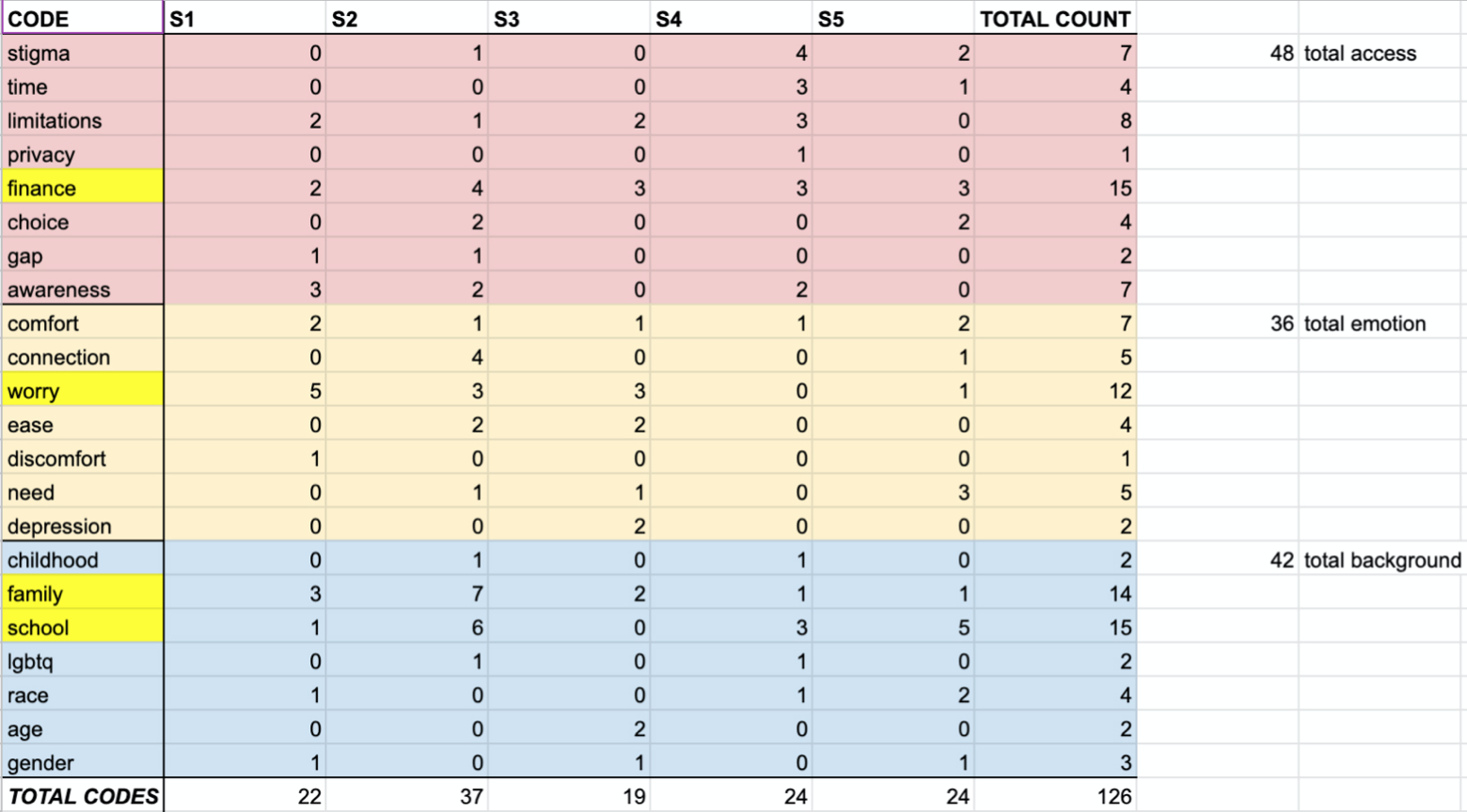We interviewed five participants in major cities both in the United States (Boston metro area,
New York City, Columbus) and India (Mumbai). The age range of our participants ranged between 20
and 30 years old of which three were women, one non-binary person and one man. All of the
participants were college-educated and had sought mental health treatment for stress, anxiety,
depression, or family problems. Out of the five interviews, two were conducted by Ragini, two by
Niyati, and one by Dee. All were recorded and then later transcribed into Google Sheets files
for coding.
Before beginning the interview process, we developed an interview guide with categories of
questions we wanted to ask our participants. We also took care in designing questions to not
force people to reveal any sensitive information such as the specific issue they were seeking
therapy for or specific topics they discussed in their therapy appointments. We are aware that
mental health is a very sensitive subject for a lot of people, so we wanted to be sure that we
wouldn’t overstep any boundaries.
A coding scheme was then developed for analyzing the transcripts. Transcripts were largely
analyzed by the unit of responses to each question, but particularly long responses were broken
into paragraphs and analyzed by the unit of paragraph and then they were anonymized. We met to
code two of the five transcripts as a group, then discussing discrepancies to resolve them. Of
the remaining three transcripts, one was then coded by Niyati and Ragini, and two were coded by
Dee, with some uncertainties resolved by Niyati and Ragini.














